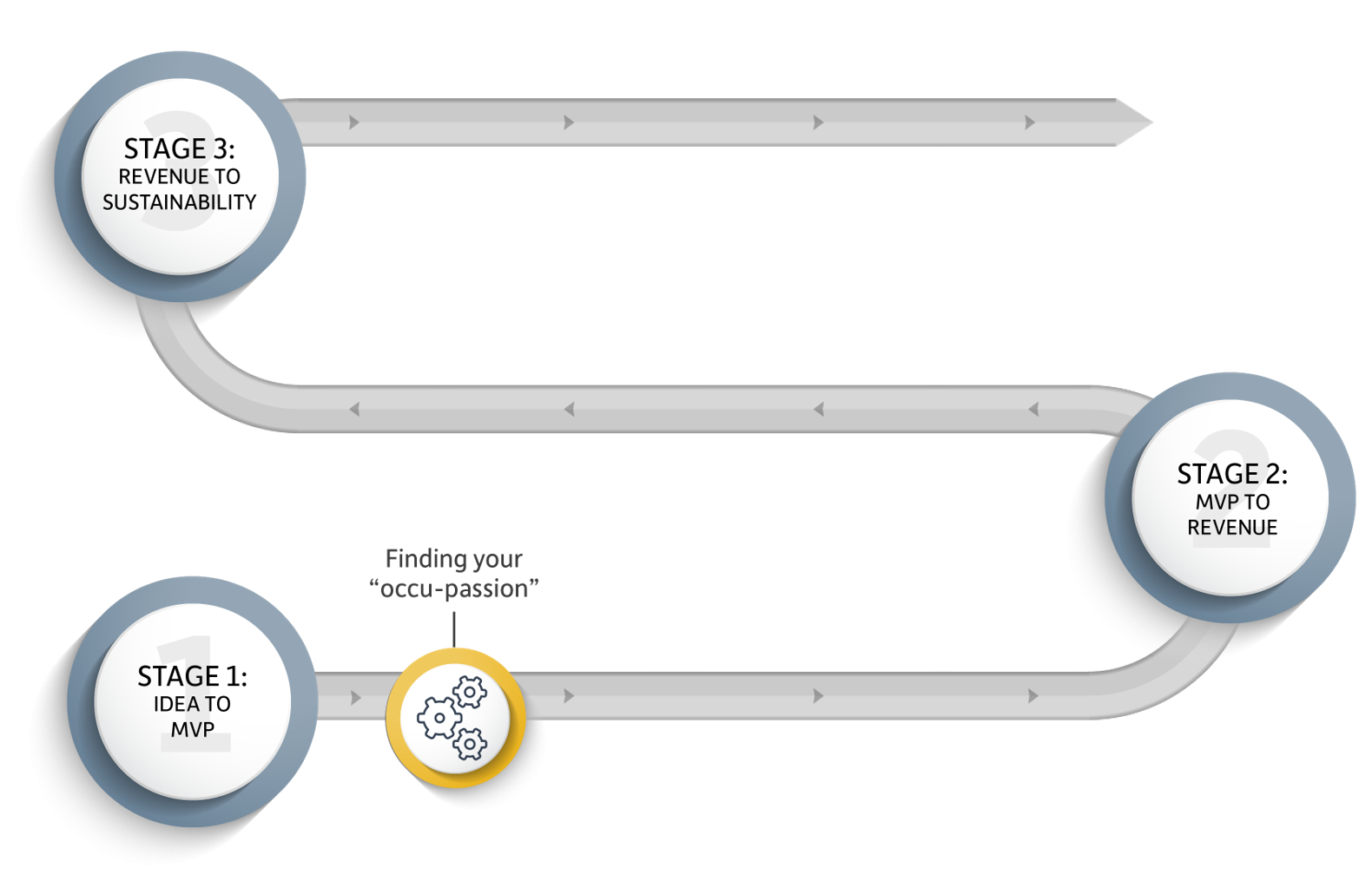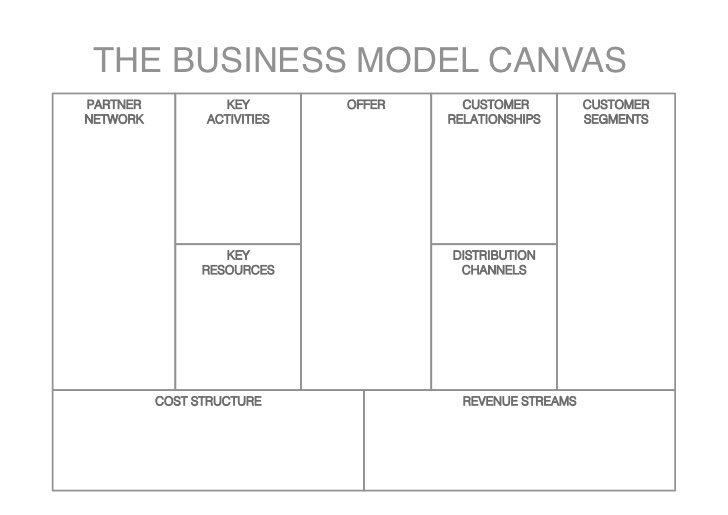Your passion is your fuel, but the GPS provided by The Mindful Startup Formula is what will guide you and your startup to success. Last time on StartupHeat, we defined the importance of an entrepreneurial map for success and gave you an overview of the Formula, which is composed of three key stages:
- STAGE 1 – Idea to Minimum Viable Product (MVP)
- STAGE 2 – MVP to Revenue
- STAGE 3 – Revenue to Sustainability
In today’s post, we’re going to focus on STAGE 1 – Idea to MVP, where your goals are to:
Leverage your love for the problem to achieve problem-solution fit, and build a successful business model, starting with a minimum viable offering (MVP).

Achieving Problem-Solution Fit
Achieving problem-solution fit is tricky because it’s a multi-dimensional equation without a clearly defined answer and it’s a moving target. But many investors and successful founders will tell you, “I know it when I see it.”
So, how do you solve for X, when X is undefined? The key is creating a framework and guidelines to increase your odds. The following three steps will help you collect and evaluate the data required to achieve problem-solution fit:
- Confirm the problem should be solved by you (and your team).
As a founder, your life is now your business. So, it would be wonderful if this new business opportunity and your own personal mission and values align. Once you’ve found your Why, you can set out to solve a problem you’re passionate about and build a successful business model around it.
In a recent interview with Wes Okeke, founder and CEO of the technology startup consulting company Fruition Tech Labs, he talked about the importance of every business having a mission statement.
“The mission actually drives the heart and sets the foundation of the business,” he said. “So, what I normally do is I draw out their mission statement, which is their Why.”
Wes says he watches Simon Sinek’s TED Talk “Start with Why” several times a month and has every entrepreneur he encounters watch it multiple times.
“I have them create a vision statement but I have them actually do a vision story,” he says. “In a perfect world looking years out, how does the world change based on what they want to implement?”
He asks entrepreneurs to focus specifically on the interactions people will have with their business that will create change. He asks them what their vision looks like in order to study their core values, which are extremely important in the long run of the business, as well as attracting partners and employees that are the right fit.
As you – the founder – come to fully understand the problem, you’ll need to evaluate whether or not you have the technical domain expertise to sufficiently build a solution for the problem. If not, you’ll need to bring in a co-founder to help. This will ensure you’re building a core entrepreneurial team that aligns with the problem. It also will give you credibility when presenting your solution to prospective investors and/or buyers and will help ensure you’re developing the right solution.
- Use customer discovery to map the ideal solution (and compare it to your vision).
Next, as you contemplate all the ways you can solve the problem, it’s important to find customers to tell you the problem is worth solving, which brings us to customer discovery.
I always use the energy industry as an example, because it’s one riddled with problems and inefficiencies. Operators have no interest in solving problems when oil prices are high. So, no matter how good the solution is, when there isn’t an appetite to solve the problem, you’re pushing a wet noodle uphill if you pursue that opportunity any further.
Customer discovery is the process of understanding your customer’s pain, the importance of their needs being met, and the positive and/or negative implications if the pain does or doesn’t go away. Ultimately, you’re looking to get validation from the customer: Does your product solve their pain, and are customers willing to pay you for the awesome solution you’re offering them?
Customer discovery is critical to product creation. If done well, you might be the next Steve Jobs. If done poorly, you might be the next Betamax!
The key to customer discovery is to talk less and listen more. Ask open-ended questions, take lots of notes, and stay curious about why the answers are the answers. Most entrepreneurs want to tell prospective customers about their new solution, but the winners are curious, they ask why a lot, and they listen 10 times more than they talk.
For more background on the subject of customer discovery, here’s a great article from renowned Silicon Valley entrepreneur, Steve Blank.
- Explore the industry dynamics and competitive landscape. Then identify the market opportunity for the unique solution you’ve identified.
Once you’ve secured the necessary technical credentials for your startup team and you’ve done sufficient customer discovery, you can begin developing your value proposition or finding your “blue ocean.” How do you identify a market opportunity that makes customers gravitate to you as opposed to you competing on price or, worse, competing on features and benefits?
I’m a big believer in using the Blue Ocean Strategy because it helps you see the world differently and find a competitive edge!
To find the blue ocean, one has to dig deep into industry, competitive, and market analyses. Industry research can help you understand trends, problems, and opportunities at a high level. Competitive analysis will help you understand the landscape of value propositions being offered and can give you a sense of how unique your value proposition is to the market.
Market analysis will help you understand how to segment the various prospective customers and on what ideal customer profile your value proposition may be best suited to focus on to achieve product-market fit. (We’ll discuss this concept in the next StartupHeat post.)
Wes also observed that “Your value proposition should be far more than just a product.” A good example of this thinking is Southwest Airlines, a purpose-driven corporate success. Southwest’s executive team and employees describe the airline as “a customer service company that happens to fly planes.”
As you develop your value proposition, you’ll need a concise pitch that will validate your team and ensure the customer is aligned with both the solution and the problem. You’ll also need to articulate why the problem needs to be solved right now. Often the difference between startups that thrive and scale fast and those that fail is that successful startups solve problems buyers need solved today.

Building the MVP and Business Model

Once you’ve achieved the first half of problem-solution fit, you’re ready for the 2nd half: to build your minimum viable product (MVP) and base business model.
There are ways to create an MVP without spending a lot of money. In fact, that should be your goal. One way is to build out what we call pretotyping, where you don’t create a full solution but instead produce one that’s “make-believe.”
For example, McDonald’s once considered serving spaghetti. They never actually rolled out the product nationwide. They just put it on the menu in a few of their stores and watched to see how many people would order it. Needless to say, the product flopped, but the company learned valuable lessons in testing and was able to adapt.
There are many things you can do without actually building the full solution to test with prospective customers. If you choose to build out a full solution, it should be as minimalist and cost-effective as possible to allow you to move fast and make changes, as needed, with lower financial commitment and risk.
The MVP development cycle, ultimately, helps you achieve problem-solution fit in that it can gauge at what point customers believe the product is something they need and are willing to pay for because it solves an immediate problem and makes their lives better. If your product falls short with customers during testing, your technical team can simply go back and fine-tune it, accordingly.
Ultimately, you’re trying to find those early-adopter customers that are willing to pay for your solution. So keep iterating on the MVP until five or more customers are paying for the product. Even if discounted, get them to agree on the product’s value, why they need it, and, hopefully, why they can’t live without it!
You need early-adopter customers to pay for the solution and agree on its value because that becomes the foundation for your business model. There are lots of examples and tools to use for illustrating your business model and creating a basic financial model to ensure your revenue is more than your cost (when scaled). If you’re not sure if you can charge more than the fully-loaded cost to produce the product or deliver the service, then you have to go back to the MVP drawing board and keep iterating.
To help you with this exercise, I like the FourWeekMBA toolset for business model tools:

In our next StartupHeat post, we’ll discuss STAGE 2 of The Mindful Startup Formula – MVP to Revenue, in which you’ll strive for product-market fit to ensure the market is big enough to pursue the opportunity. Until then, stay curious, focus on the signal, and make mindful decisions on your journey to success!



